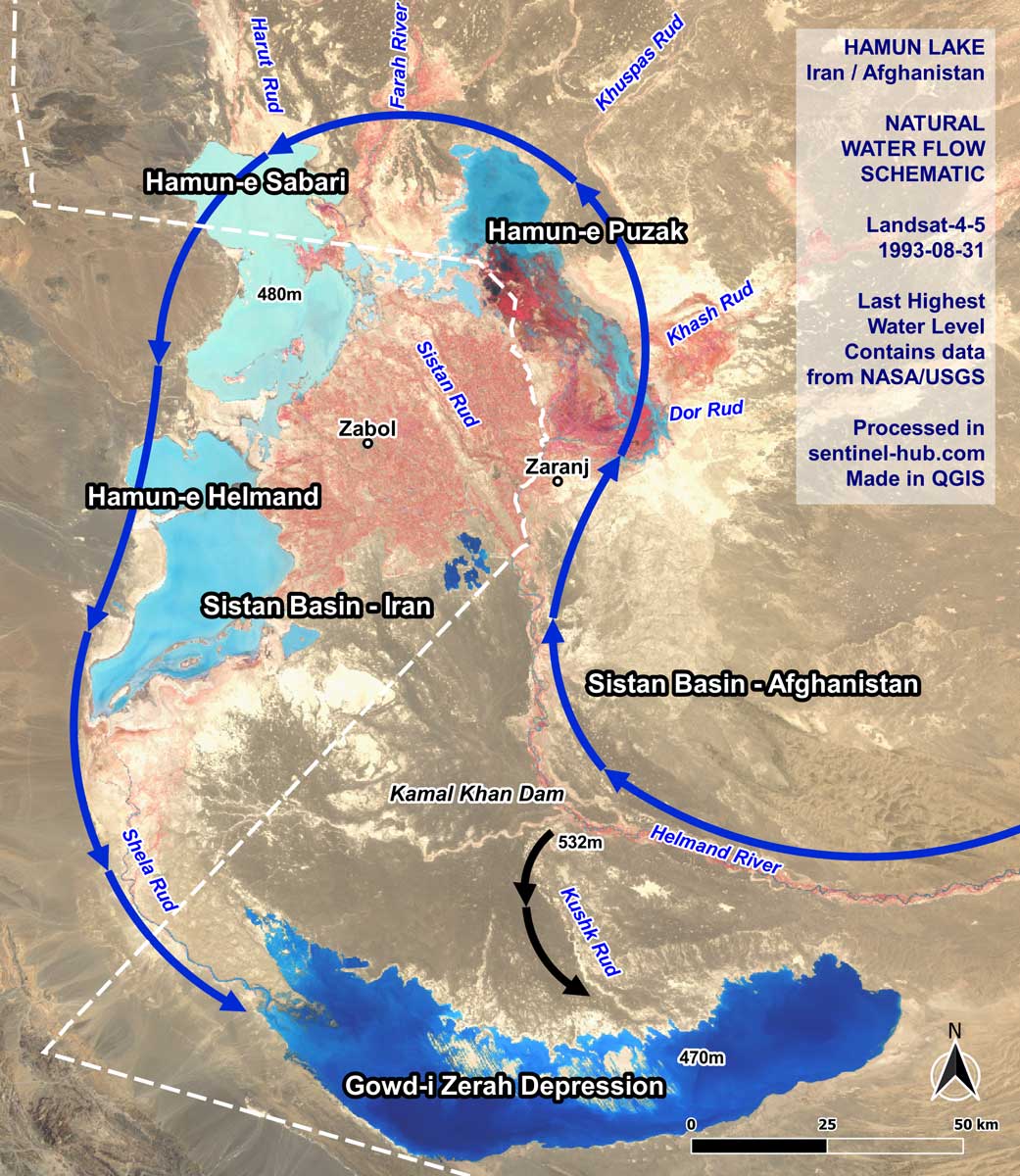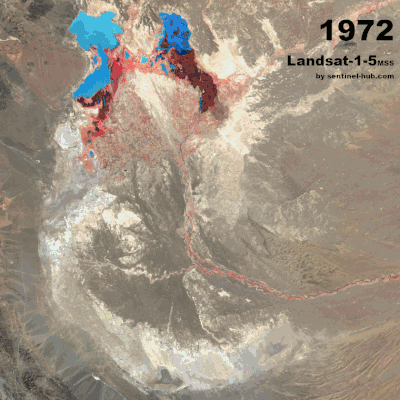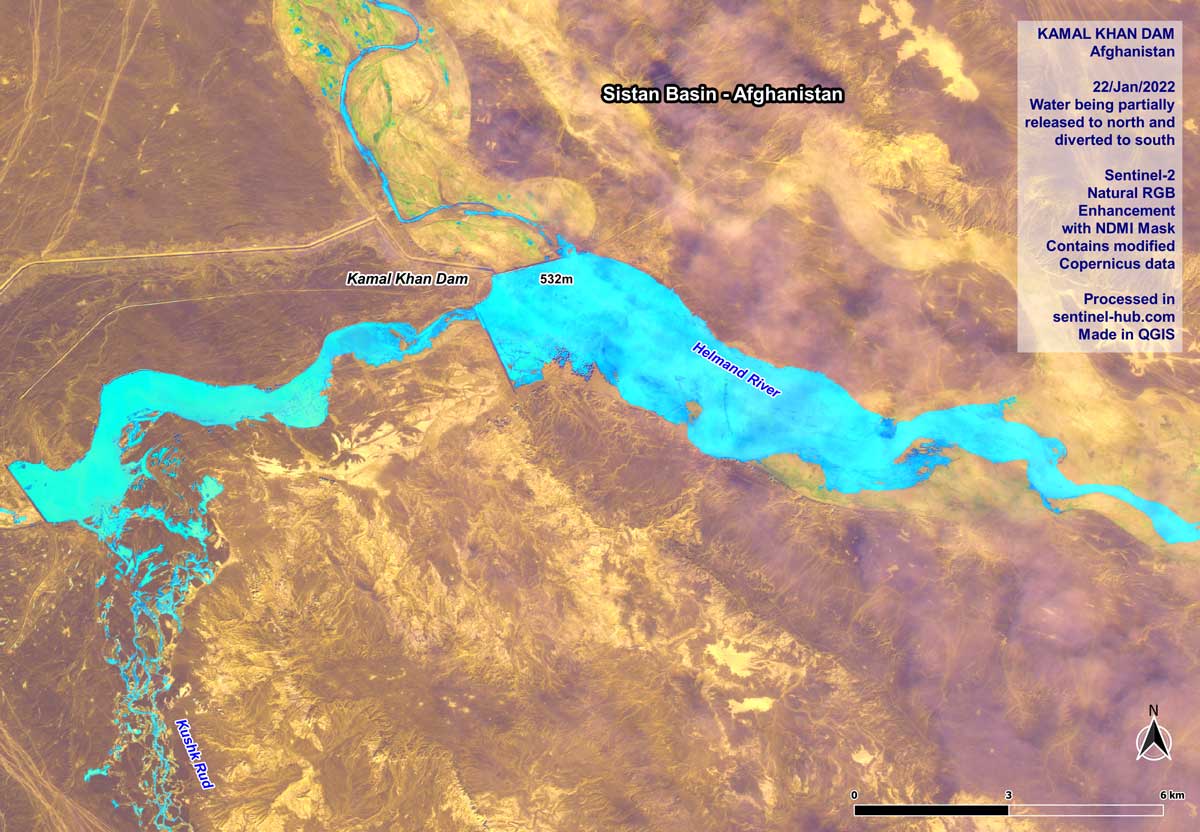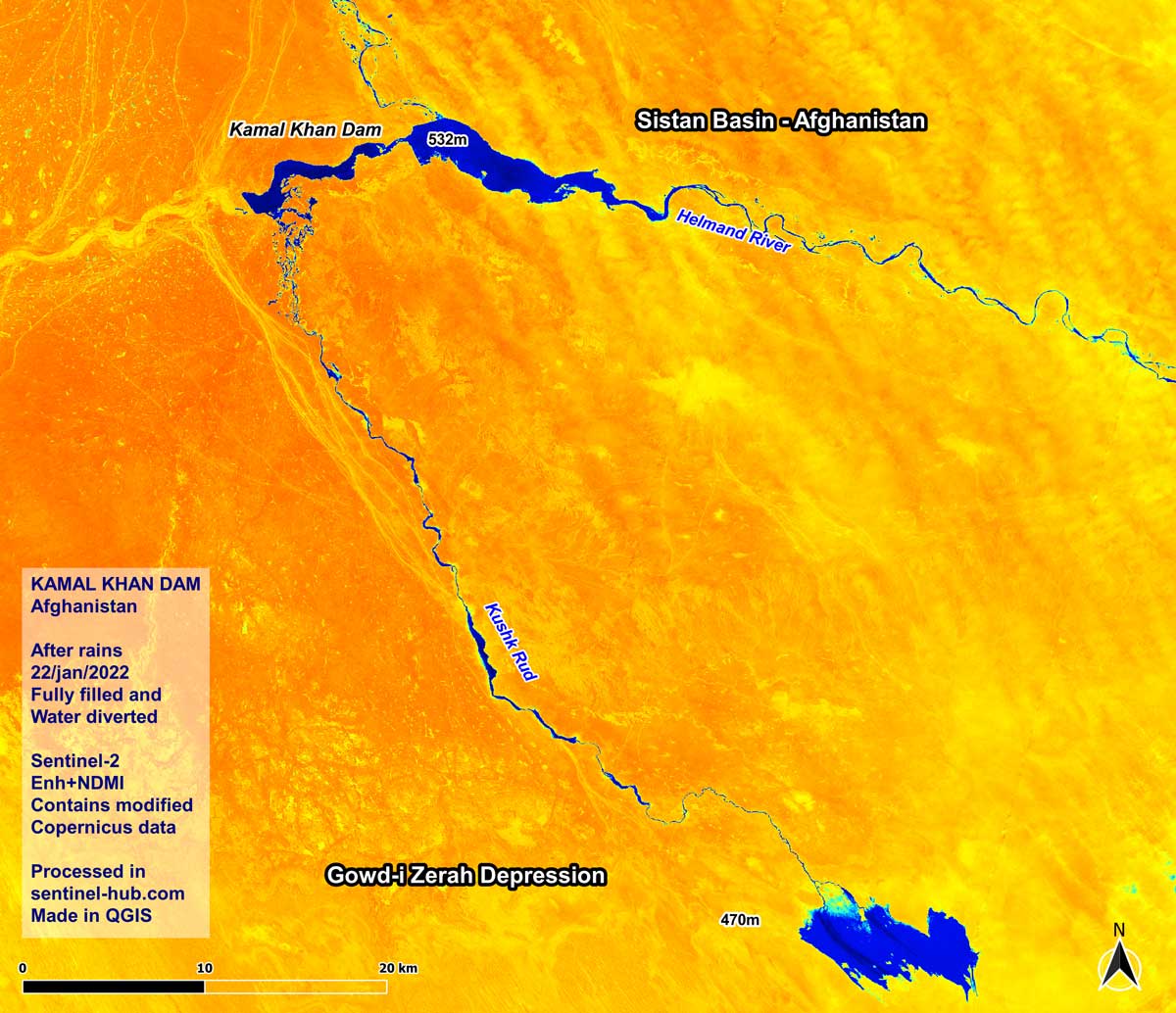
Unprecedented rains in 2022 raised hopes for the drought-devastated Hamun Oasis, or Hamun wetlands, on the Afghanistan-Iran border, but political conflicts threaten to dash them. Recent maps uploaded to Soar shed new light on the situation.
The history
The Hamun Oasis is a seasonal lake in the Sistan Basin, surrounded by high mountain peaks. It’s made up of a series of small interconnected lakes which together create the largest freshwater lake in Iran. The region has been inhabited for almost 1,500 years, with local communities and wildlife relying on this vital water source.

Click here to view on platform
A glimmer of hope
Recent rainfall raised hopes of replenishment across the wetlands. However, most of the replenishment occurred at the northern part of Hamun lake, in Hamun-e Sabari and Hamun-e Puzak, as we can see in this Soar map. These lakes receive water from the northern mountains through the waterways Farah Rud and Harut Rud. But other areas of the wetland, such as the areas around Zabol and Sistan Rud, have remained dry, as water has been diverted.
The southern areas of the Sistan Basin have also suffered, as much of the water was diverted and is being retained by the Kajaki Dam, the recently-completed Kamal Khan Dam, and other smaller water diversion structures. You can see from this map in Soar (also see below) how the water is currently distributed across the Hamun Lake region. The red dots indicate man-made water barriers - which are preventing a wider recovery of the wetlands.

Click here to view on platform

Click here to view on platform

Click here to view on platform